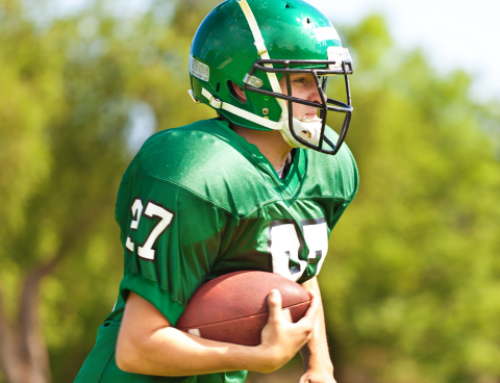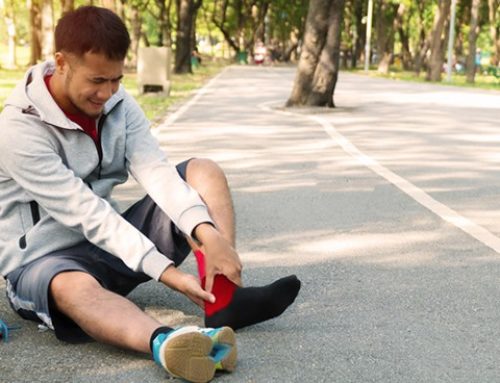4 Common Causes of Wrist Pain, and How to Fix Them
With eight bones and a network of ligaments and tendons, the wrist is a complex joint that presents plenty of opportunities for problems. No wonder wrist pain is a fairly common complaint among athletes. If you’re experiencing wrist pain, find out if you have one of these four common wrist ailments.
Sprains and Strains
What Is It?
A sprain or strains can occur if an athlete falls on an outstretched hand and puts stress on ligaments in the wrist. Pain, swelling, and bruising are common symptoms. There are three grades of sprains:
- Mild-ligament stretching
- Partially torn ligaments
- Completely torn ligaments
The Fix
Sprains should be evaluated by a doctor to determine which grade of a sprain has occurred. A typical sprain will be treated using the RICE method (Rest, Ice, Compression and Elevation) until healed. Often after wrist injuries, you will wear a brace to stabilize the wrist and prevent further injury.
Tendinitis
What Is It?
Tendinitis of the wrist is caused by repetitive motions. It’s common in sports like tennis and field hockey, which repeatedly engage the wrist. The base of the thumb is the most commonly affected area, resulting in a condition called De Quervain’s tendinitis and producing pain and swelling.
The Fix
For tendonitis to heal, the tendons need time to rest. Wear a brace or cast and avoid activities that stress the wrist. To minimize swelling and control pain, icing and anti-inflammatory medicines are recommended. In extreme cases, corticosteroid injections or surgery may be necessary.
Carpal Tunnel Syndrome
What Is It?
Carpal tunnel is a condition caused by the compression of a nerve in the hand. If the nerve becomes compressed for long periods of time, it results in pain, numbness, weakness, and tingling in the hand and fingers.
The Fix
To ease the symptoms, take a break from repetitive activities that stress the hand, wear a wrist splint and stretch your fingers and wrists regularly. If the condition is bad enough, anti-inflammatories, corticosteroids, or physical therapy may be prescribed by a doctor. Worst case scenario: surgery may be necessary.
Arthritis
What Is It?
Arthritis is a less common cause of wrist pain, especially in young athletes. Osteoarthritis results from normal wear and tear of the joint. It is most likely to occur in previously injured writs. Rheumatoid arthritis is an autoimmune condition that attacks the joints and can cause extreme pain. Usually, multiple joints, not just the wrist, experience symptoms of arthritis, which include swelling, pain, weakness, and limited motion.
The Fix
Treatment varies depending on what kind of arthritis is present, but many fixes include splinting of the wrist, anti-inflammatory medication, or steroid injections.
Prevent Wrist Injuries
Taking preventive steps and being cautious can forestall many wrist injuries. To keep bones strong, get adequate amounts of calcium every day. This will help reduce your chances of suffering a bone-related wrist injury. Although you cannot eliminate falling, try to remove hazards that could result in any kind of slip or fall. During athletics, wear proper gear to protect your wrists. Try to avoid repetitive motions that can cause injury. Finally, stretch.
Read more about preventing and rehabbing wrist injuries:
RECOMMENDED FOR YOU
MOST POPULAR
4 Common Causes of Wrist Pain, and How to Fix Them
With eight bones and a network of ligaments and tendons, the wrist is a complex joint that presents plenty of opportunities for problems. No wonder wrist pain is a fairly common complaint among athletes. If you’re experiencing wrist pain, find out if you have one of these four common wrist ailments.
Sprains and Strains
What Is It?
A sprain or strains can occur if an athlete falls on an outstretched hand and puts stress on ligaments in the wrist. Pain, swelling, and bruising are common symptoms. There are three grades of sprains:
- Mild-ligament stretching
- Partially torn ligaments
- Completely torn ligaments
The Fix
Sprains should be evaluated by a doctor to determine which grade of a sprain has occurred. A typical sprain will be treated using the RICE method (Rest, Ice, Compression and Elevation) until healed. Often after wrist injuries, you will wear a brace to stabilize the wrist and prevent further injury.
Tendinitis
What Is It?
Tendinitis of the wrist is caused by repetitive motions. It’s common in sports like tennis and field hockey, which repeatedly engage the wrist. The base of the thumb is the most commonly affected area, resulting in a condition called De Quervain’s tendinitis and producing pain and swelling.
The Fix
For tendonitis to heal, the tendons need time to rest. Wear a brace or cast and avoid activities that stress the wrist. To minimize swelling and control pain, icing and anti-inflammatory medicines are recommended. In extreme cases, corticosteroid injections or surgery may be necessary.
Carpal Tunnel Syndrome
What Is It?
Carpal tunnel is a condition caused by the compression of a nerve in the hand. If the nerve becomes compressed for long periods of time, it results in pain, numbness, weakness, and tingling in the hand and fingers.
The Fix
To ease the symptoms, take a break from repetitive activities that stress the hand, wear a wrist splint and stretch your fingers and wrists regularly. If the condition is bad enough, anti-inflammatories, corticosteroids, or physical therapy may be prescribed by a doctor. Worst case scenario: surgery may be necessary.
Arthritis
What Is It?
Arthritis is a less common cause of wrist pain, especially in young athletes. Osteoarthritis results from normal wear and tear of the joint. It is most likely to occur in previously injured writs. Rheumatoid arthritis is an autoimmune condition that attacks the joints and can cause extreme pain. Usually, multiple joints, not just the wrist, experience symptoms of arthritis, which include swelling, pain, weakness, and limited motion.
The Fix
Treatment varies depending on what kind of arthritis is present, but many fixes include splinting of the wrist, anti-inflammatory medication, or steroid injections.
Prevent Wrist Injuries
Taking preventive steps and being cautious can forestall many wrist injuries. To keep bones strong, get adequate amounts of calcium every day. This will help reduce your chances of suffering a bone-related wrist injury. Although you cannot eliminate falling, try to remove hazards that could result in any kind of slip or fall. During athletics, wear proper gear to protect your wrists. Try to avoid repetitive motions that can cause injury. Finally, stretch.
Read more about preventing and rehabbing wrist injuries:











